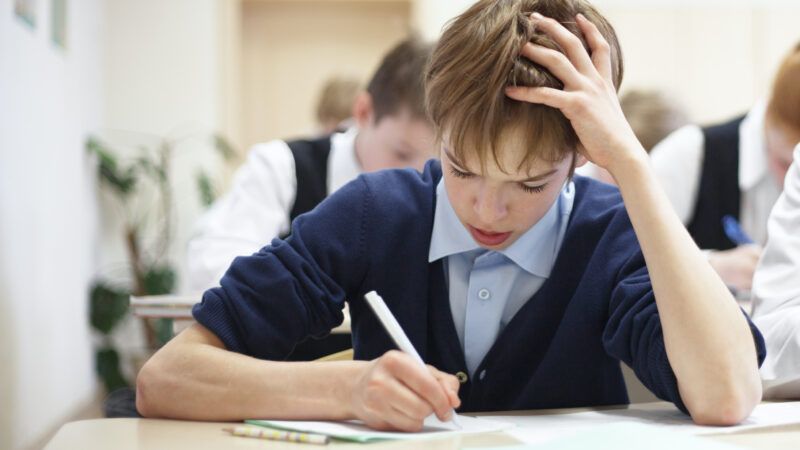Public Schools Are Failing Students with Disabilities
A New York Times investigation accidentally makes the case for school choice by detailing how poorly public schools are serving vulnerable students.

School can be tough for anybody, but especially students with disabilities. A disability can make it difficult to learn or concentrate. Schools that introduce resource officers to campus tend to see higher rates of discipline and arrest, and students with disabilities suffer disproportionately.
According to a New York Times investigation, many public schools in the U.S. are finding ways to skirt federal laws like the Individuals with Disabilities Education Improvement Act of 2004 (IDEA) and Section 504 of the Rehabilitation Act of 1973. Students with disabilities are suspended or expelled at disparate rates compared to others. The above laws provide additional protections to help ensure that an already-vulnerable subset of students can still receive an education.
According to guidance issued in July by the U.S. Department of Education, "it would violate Section 504 to respond to a student's disability-based behavior by shortening the length of the student's school day, thus reducing the minutes or hours the student is in the educational environment" without considering whether "additional or different services are needed." But according to the Times, many public schools do exactly that: Termed informal removals, schools simply remove a child from a class. Unlike suspensions or expulsions, removals are not tracked.
In one example, Dakotah LaVigne struggles with developmental delays resulting from a genetic disorder. Despite showing promise early on, he began demonstrating disruptive behaviors in second grade. In response, his school began sending him to a "safe room" away from his peers for hours. By middle school, he would only attend class for an hour a day and his mother routinely had to pick him up early. Dakotah did not attend a full day of school again between second grade and age 15, when his mother removed him.
LaVigne was ultimately able to switch to a school in a different district, which has so far made a difference. But for most parents, that is not an option. Parents can sometimes switch schools or school districts by request, but it depends on the state in which they live and can sometimes require the school district's approval. Most often, a parent's options are to live with subpar public education or to school their kids at home, which is not feasible without a stay-at-home parent. Meanwhile, under many school choice systems, parents are free to take their children to another school that may better serve their family's needs.
The Times story says, "Federal funding to help schools cover the extra costs of special education has always fallen short of the targets in the law, leaving many without the resources they say they need." One straightforward solution would be to let those students opt out of the system that is serving them so poorly.
